Exercise is not just about getting your dream body or kicking stress out the window. It’s got a whole lot more up its sleeve, like boosting your hair health. When you break a sweat, your heart starts pumping faster, and what does that do? It increases blood circulation, reaching all the way up to your scalp. More blood flow means more oxygen and nutrients are hustling their way to your hair follicles, and that’s a real treat for them.
Now, let’s talk about these hair follicles, which are like little factories producing the stuff your hair is made of. When they get a steady supply of those vital nutrients and oxygen, they can do their job better. This can lead to stronger, more vibrant hair! You know that feeling after a good workout when you feel all revved up? Your hair follicles are getting a taste of that action too.
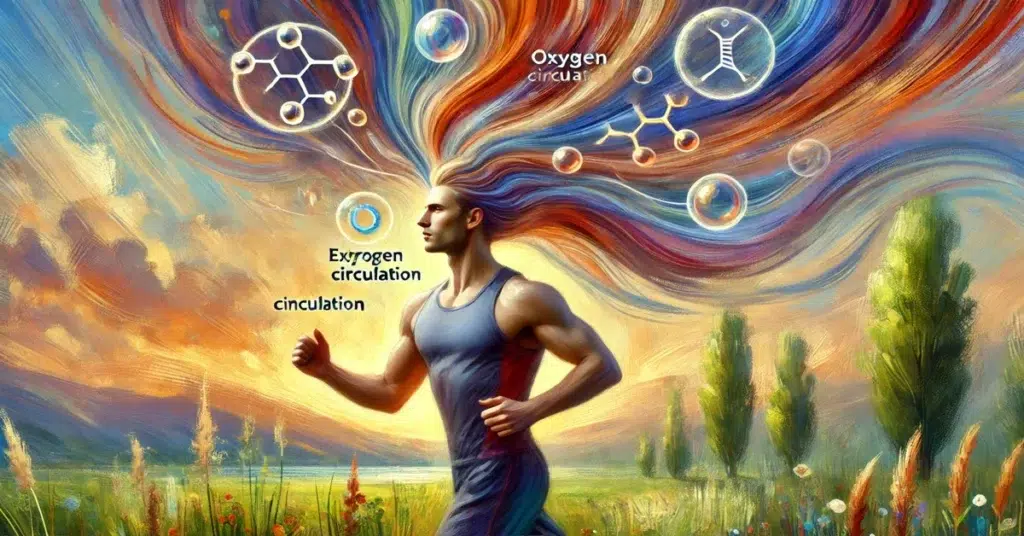
And the benefits keep rolling. Regular exercise keeps the body on its toes, creating the ideal conditions for hair growth. Think of exercise as a natural tonic that jump-starts the body into optimal mode, helping to revitalize hair from the roots up. Hair looking and feeling healthier with each session? Sounds like a win to me!
🔗 The Sweaty Truth: How Exercise Impacts Your Hair and Scalp
Sweat—you can’t escape it when you’re working out. It’s got its perks, but it can be a bit of a troublemaker for your hair and scalp. When you exercise, your body heats up and sweat gets involved to help cool you down. But here’s the twist: sweat can increase pore activity, sometimes clogging them, which isn’t great news for your scalp health.
And then there’s the pH factor. Sweat can shift the pH balance of your scalp, leaning more towards acidic. This can lead to drying out your locks, especially if you’re someone who exercises daily. So, keeping your scalp refreshed post-workout is key to avoiding that dry, brittle hair look.
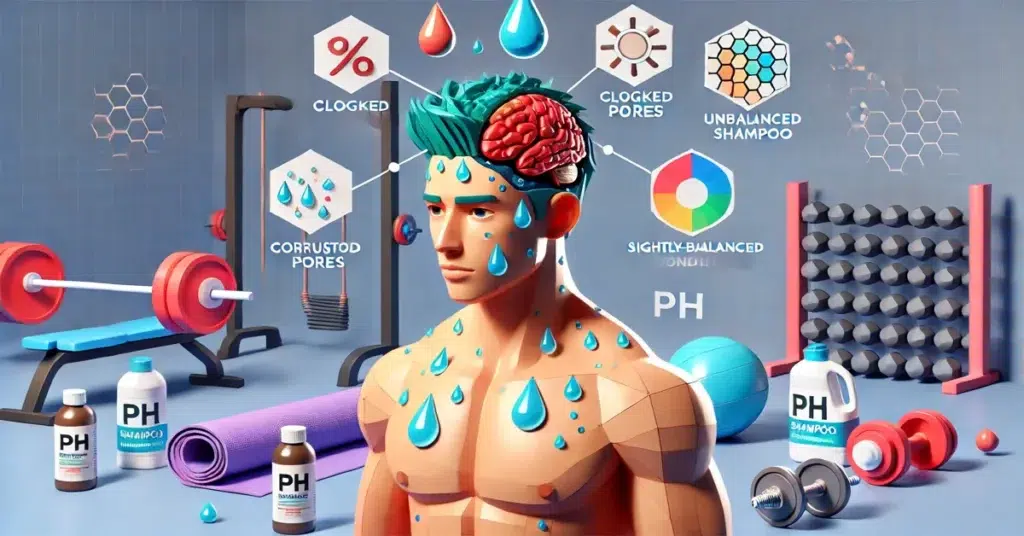
The combo of sweat and stress-induced hormones like cortisol? Yeah, not so friendly for the hair. Cortisol can, unfortunately, fuel hair thinning—especially if your scalp’s balance is already out of whack because of sweat.
Keeping these factors in mind means a little extra care is necessary. Think about incorporating shampoo and conditioner that help maintain the right pH balance and those specially formulated to manage the dryness sweat might bring on. So you’re left with nothing but good vibes and healthy hair post-gym session.
💧 Caring for Your Locks: Before, During, and After a Workout
Getting your hair ready for exercise is just as important as picking the right playlist. Before hitting the gym, choose a hairstyle that minimizes tension and keeps your hair secure. Loose braids or a high pony are great options. And if you’re into gear, headbands or bandanas can help soak up sweat while keeping things stylish. They’re lifesavers for keeping hair away from your face and absorb excess moisture too.
During your workout, keeping a water bottle close isn’t just for hydration—it’s your go-to trick for a quick cool-down. By preventing overheating, you help control excessive sweating, which in turn is a win for your scalp and hair.
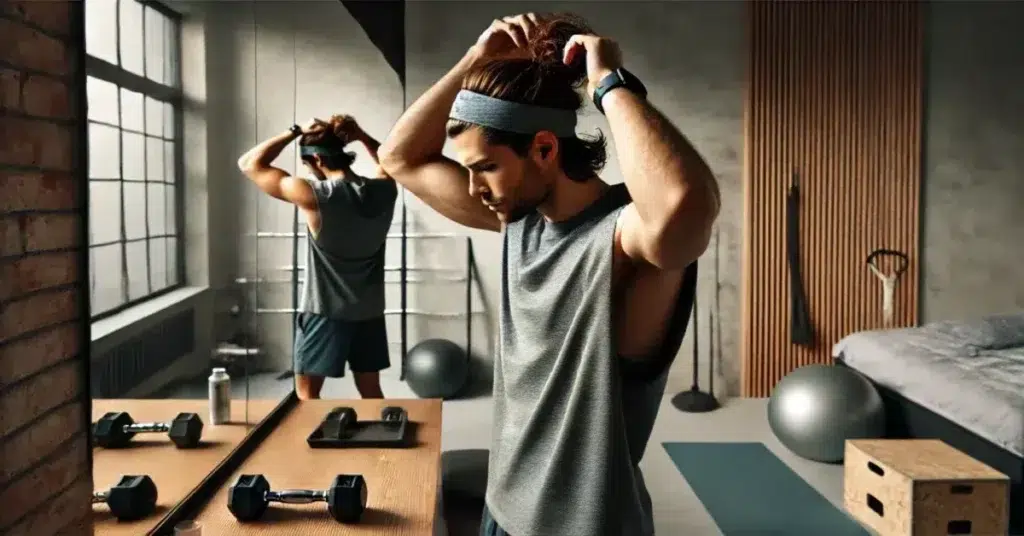
After a good workout, the question often is: to wash or not to wash? Over-washing can strip natural oils, especially for those with curly or dry hair, so it’s not always the best move every day. Consider using a gentle sulfate-free shampoo on alternate days, or try rinsing with water and applying a nourishing conditioner to freshen up without going all-in on the wash.
Keeping your hair products simple and effective is key. Look for hydrating conditioners and sprays that work with your hair type without weighing it down. When it comes to tackling post-workout hair, these products are golden.
A little planning and the right products go a long way in managing post-exercise hair. Embrace the sweat, but don’t let it dictate your hair day! These steps ensure you stay on top of the game.
🔍 Debunking Myths and FAQs
Let’s tackle some common hair myths head-on. Ever heard that sweating cleans your scalp? It’s a popular belief, but sweat doesn’t actually get rid of impurities. Instead, it can cause buildup, leading to blocked pores. Regular cleansing with the right products helps where sweat alone can’t.
Then there’s the question of exercise supplements—are they bad news for your hair? Not necessarily. Supplements like protein and creatine can support muscle growth, but make sure they’re balanced within your diet. Keep in mind that excess of anything can mess with your body’s natural balance, hair included.
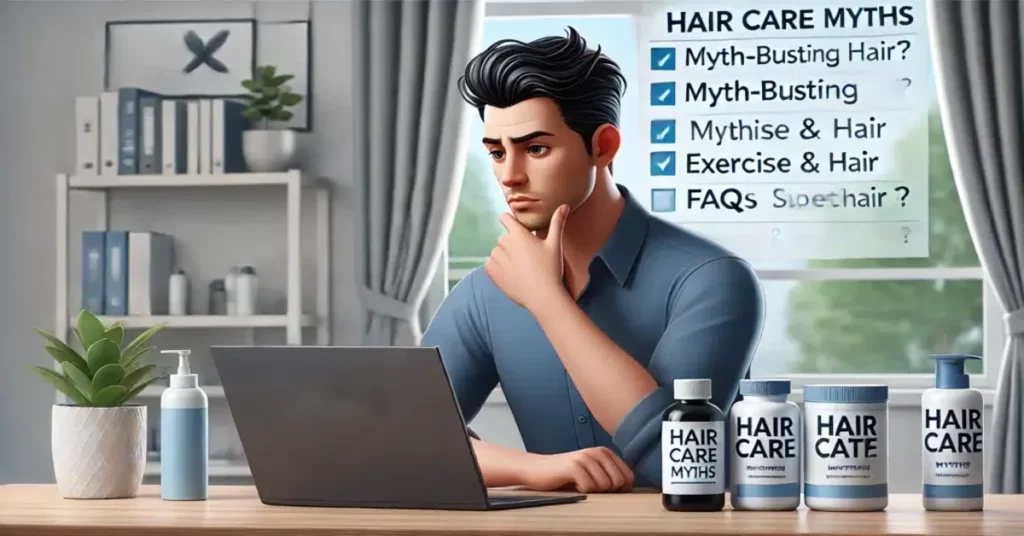
We’ve also got the hormone story. It’s often asked if hormones released during workouts—like testosterone—significantly affect hair loss. While they do play a part, the direct impact is often minimal compared to genetic factors. Stress-reducing supplements might help keep cortisol in check, indirectly benefiting your hair health.
With so many products out there promising miracles, choosing the right ones can be tricky. Anti-stress and hair-friendly supplements can be a great added boost if chosen wisely. Pair them with a routine that suits your lifestyle and hair type for the best results.
Navigating through these myths and frequently asked questions, you learn what works best for you. It’s all about finding that balance and using info (and products) that align with your specific needs.
🛒 Affiliate Opportunities: Boosting Your Hair Care Arsenal
Let’s talk about some top-notch hair care products that can really enhance your routine and maximize those workouts—a few affiliate opportunities that deserve a spot on your shelf. After all, keeping your hair in tip-top shape is the goal, especially with all that exercise can throw at it.
Sulfate-free shampoos are a win for any type of hair. They’re gentle and won’t strip away those natural oils, which is especially important post-workout. Plus, with plenty of moisturizing shampoos out there, you can find one that suits your specific needs—giving your hair the nourishment it crave.
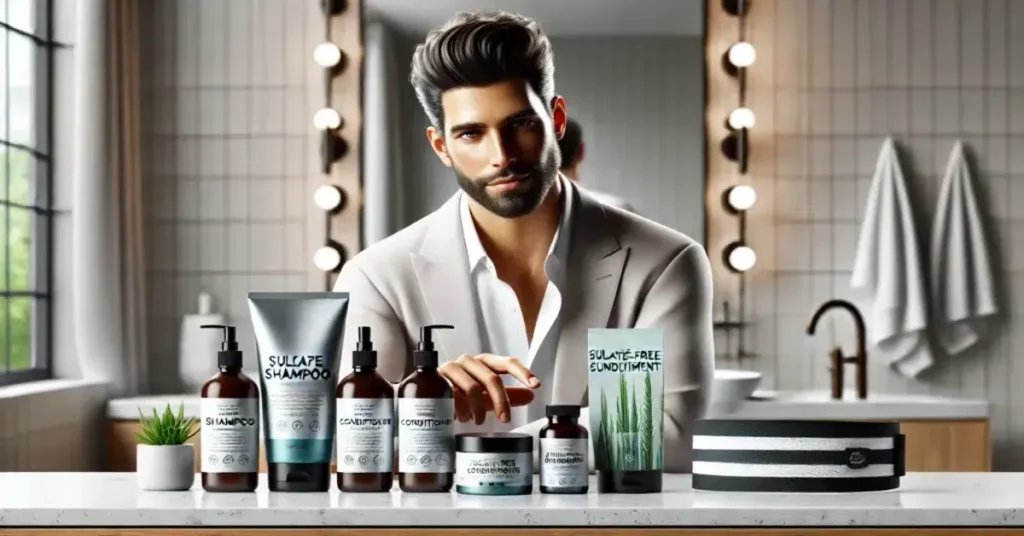
Conditioners come next. Choose ones that are designed to rehydrate and smooth out any post-exercise frizz. They can work wonders on keeping that dryness at bay. There are so many great ones infused with essential oils and vitamins, they’re worth the investment.
Thinking about supplements? Anti-stress and protein variants can benefit your overall health and, in turn, your hair. They help keep cortisol in check and boost your body’s building blocks that aid in keeping hair strong. Always go for quality options that suit your lifestyle and activity level.
Protective gear like absorbent headbands and caps aren’t to be overlooked either. They help manage sweat and shield the hair during those intense sessions, keeping it looking fresh and less prone to damage. A headband with style and function is a game-changer!
There’s a whole arsenal of products and tools out there to ensure that the impact of exercise on your hair is a positive one. Picking the right affiliates can make all the difference, and they don’t just stop at products—it’s about finding solutions that align with your lifestyle, supporting your journey to healthier, thriving hair.
Want to know who’s behind the science? ✍️ Read more about the author.

✅ FAQ – How Exercise and Sweating Affect Your Hair and Scalp
❓ Can frequent sweating from workouts lead to hair thinning?
Sweating itself doesn’t directly cause hair thinning, but the salt and bacteria buildup on the scalp can lead to irritation, clogged follicles, and inflammation if not washed out properly—factors that may indirectly contribute to hair issues over time.
❓ Should I wash my hair after every workout?
Not necessarily. If your scalp feels itchy or sweaty, a rinse with lukewarm water or a gentle sulfate-free shampoo is ideal. Over-washing with harsh shampoos can strip natural oils and lead to dryness or breakage, especially for textured or dry hair types.
❓ Can regular exercise improve scalp blood flow and hair growth?
Yes, physical activity boosts circulation throughout the body, including the scalp. Better blood flow means more oxygen and nutrients delivered to hair follicles, which can support stronger and healthier hair growth over time.
❓ Is wearing a sweatband or cap during workouts bad for your scalp?
Wearing tight or non-breathable headwear can trap heat and sweat, creating a humid environment that may encourage fungal growth or irritation. If you wear a sweatband, make sure it’s clean, breathable, and washed regularly to avoid buildup.
Last updated: June 2025 based on latest research


Leave a Reply